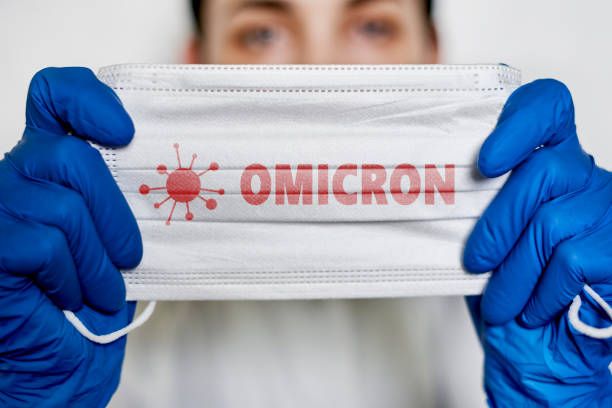Amid the ongoing exploration of SARS-CoV-2 evolution, the Omicron variant has become most prevalent, showcasing distinctive subvariants with implications for innate immune responses, and introducing questions about the dynamics of the virus. There is a convergent evolution of enhanced innate immune antagonist expression as a common pathway of human adaptation. This enhanced expression of immune antagonists is linked to the dominance of Omicron subvariants and their improved innate immune evasion.
Research recently published in Nature Microbiology indicate that Omicron’s distinct subvariants, particularly BA4 and BA5, exhibit suppression of innate immunity compared to earlier subvariants (BA1 and BA2). Recent subvariants like BA2.75 and XBB lineages also show reduced innate immune activation. This is associated with increased expression of viral innate antagonists (Orf6 and nucleocapsid), reminiscent of previous VOCs Alpha to Delta. The heightened Orf6 levels are linked to suppressing host innate responses by decreasing IRF3 and STAT1 signaling, as measured through transcription factor phosphorylation and nuclear translocation.1
“Vaccine manufacturers have already reported data from clinical trials with modified vaccines containing an omicron BA1 component. We have advised them that they should submit these data to the FDA for our evaluation before any potential authorization of a modified vaccine containing an omicron BA4/5 component. Manufacturers will also be asked to begin clinical trials with modified vaccines containing an omicron BA.4/5 component,” according to a statement from the FDA.2
The impact of early viral manipulation on disease is less clear, but it’s hypothesized that once airway infection is established, innate immune suppression allowing greater viral replication may lead to increased disease due to a higher viral burden and stronger inflammatory responses. Factors like baseline antiviral gene expression and innate induction in nasal epithelium influence infection outcomes.
3 Key Takeaways
The study unveils a common pathway of human adaptation to SARS-CoV-2, demonstrating convergent evolution leading to enhanced expression of innate immune antagonists.
Notable findings reveal that specific Omicron subvariants, particularly BA4 and BA5, exhibit a significant suppression of innate immunity compared to earlier subvariants (BA1 and BA2).
The study emphasizes the importance of understanding the phenotypic differences between Omicron subvariants and the selective forces driving their evolution.
The study aimed to understand the phenotypic differences between Omicron subvariants (BA1-BA5) and the selective forces driving their evolution. The comparison involved replicating and examining host responses of these subvariants alongside previously dominant Delta variants in human airway epithelial cells (Cali-3 cells). The study equalized the input dose of each variant based on viral envelope (E) gene copies to ensure equal exposure to viral RNA, a key factor activating host innate immune responses. Notably, the approach accounted for variant-specific differences in cell tropism and entry routes, relevant for Omicron due to spike mutations alerting entry mechanisms. These findings revealed cell type-specific differences in variant titers.
“We propose that adaptation in spike and beyond also contributes to enhanced replication in human cells.”The researchers wrote, “This study adds to the body of evidence for innate immunity being a key barrier that must be overcome by all pandemic zoonotic viruses, particularly in the absence of immune memory in an exposure-naïve species.”1
Researchers emphasize the importance of outpacing early innate responses during transmission, particularly in environments with a mix of permissive and non-permission cells, such as the upper human airways. Innate immune responses are a crucial barrier during transmission even after the virus is established in humans, highlighting an ongoing trajectory of adaptation toward evading innate immune mechanisms.
The study utilized cell culture methods involving various cell lines (Calu-3, Caco-2, Hela-ACE2, A459) and SARS-CoV-2 lineages (Alpha, Delta, and Omicron subvariants). The infection process included calculating inoculum based on viral E gene copies per cell, followed by a 2-hour inoculation period at 37 degrees Celsius.
Early interferon (IFN) is beneficial in reducing transmission, while late IFN responses may contribute to disease. Ongoing studies, including human SARSCoV2 challenge trials, are expected to provide insights into these dynamics and the innate immune contributions to transmission and disease.
References
1. Reuschl, AK, Thorne, LG, Whelan, MVX, et al. Evolution of enhanced innate immune suppression by SARS-CoV-2 Omicron subvariants. Nat Microbiol. Published online January 16, 2024. doi:10.1038/s41564-023-01588-4
2. Coronavirus (COVID-19) update: FDA recommends inclusion of omicron BA.4/5 component for COVID-19 vaccine booster doses. FDA. Published June 30, 2022. Accessed January 17, 2024. https://www.fda.gov/news-events/press-announcements/coronavirus-covid-19-update-fda-recommends-inclusion-omicron-ba45-component-covid-19-vaccine-booster

